Probably more than other places in the country, Louisiana and food are synonymous. People from all over the world come to this southern state to experience the Cajun and Creole dishes that you truly can’t find anywhere else. Or, if you can, it just won’t quite be as authentic or as delicious. For instance, trying some freshly made Andouille sausage for the two stores and other places was completely different from the grocery store version I knew from before.
After last week’s post about the activities our group did in the River Parishes, I’m turning my attention to the cuisine. There isn’t too much I can add to the lore of Cajun/Creole food. But I will say that after several days of eating gumbo, jambalaya, boudin sausage, red beans and rice, and alligator, it almost became too much of a good thing. By the time we arrived for the IFWTWA conference in Lafayette, we welcomed the opportunity to order flatbread at the hotel. It’s a rich and hearty cuisine that has just become a lot to consume.
But for now, I’ll celebrate what makes this regional food unique and beloved. We even had the opportunity to prepare our own with a local Cajun food legend, which I’ll mention in just a bit. The simplest differences between Cajun and Creole are that the former is from the country and heartier, and the latter is from the city and more refined. Also, you put tomatoes in a Creole gumbo but never in a Cajun on, or so I was told.

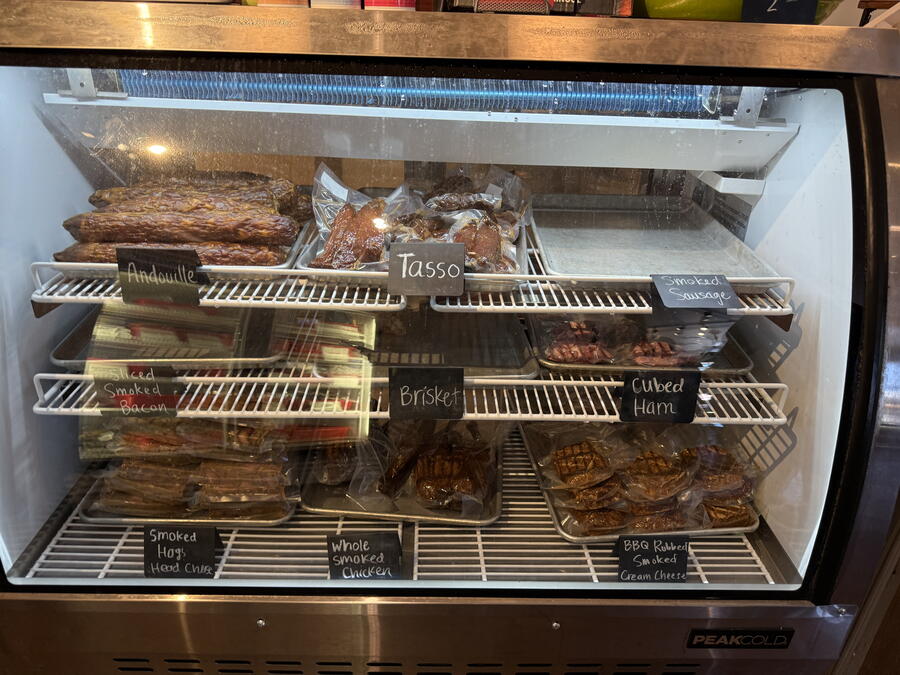
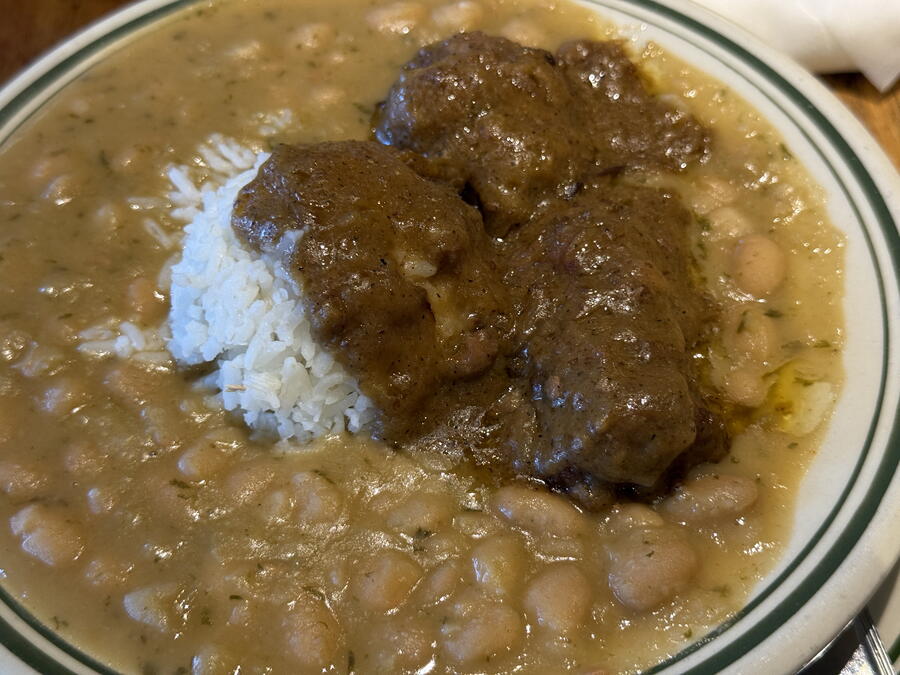
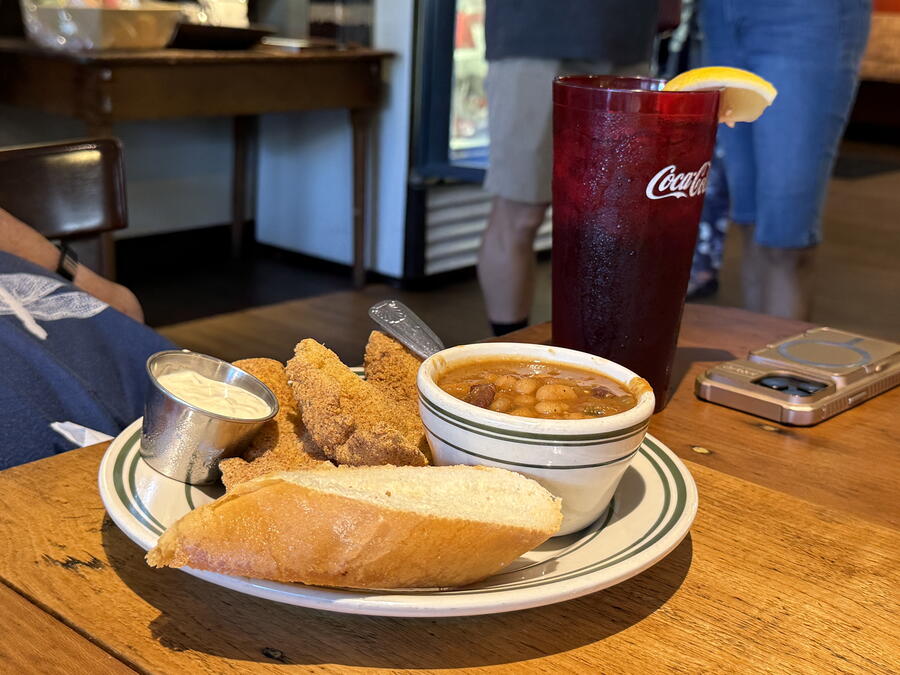
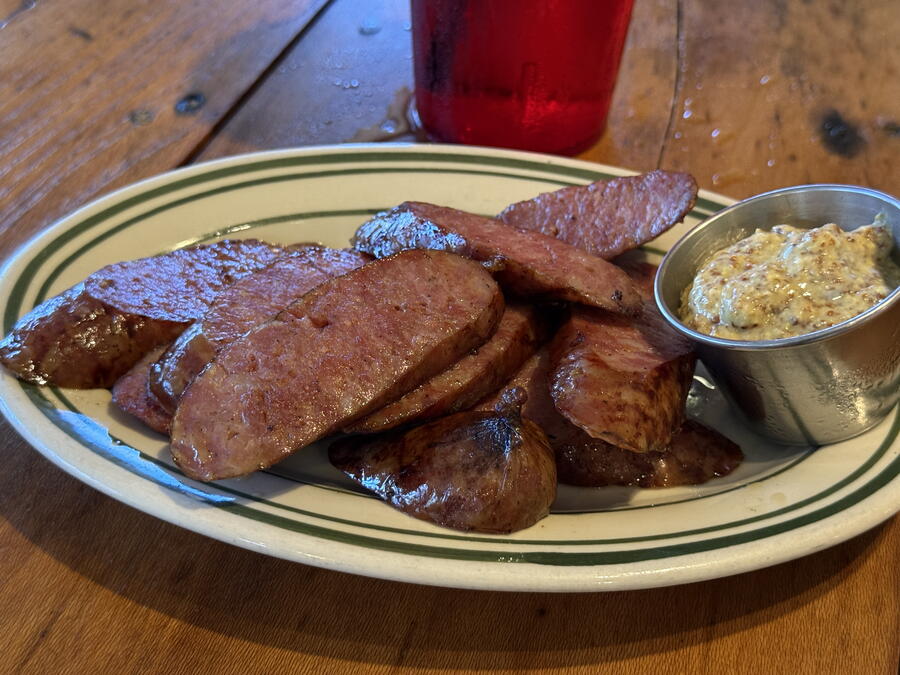
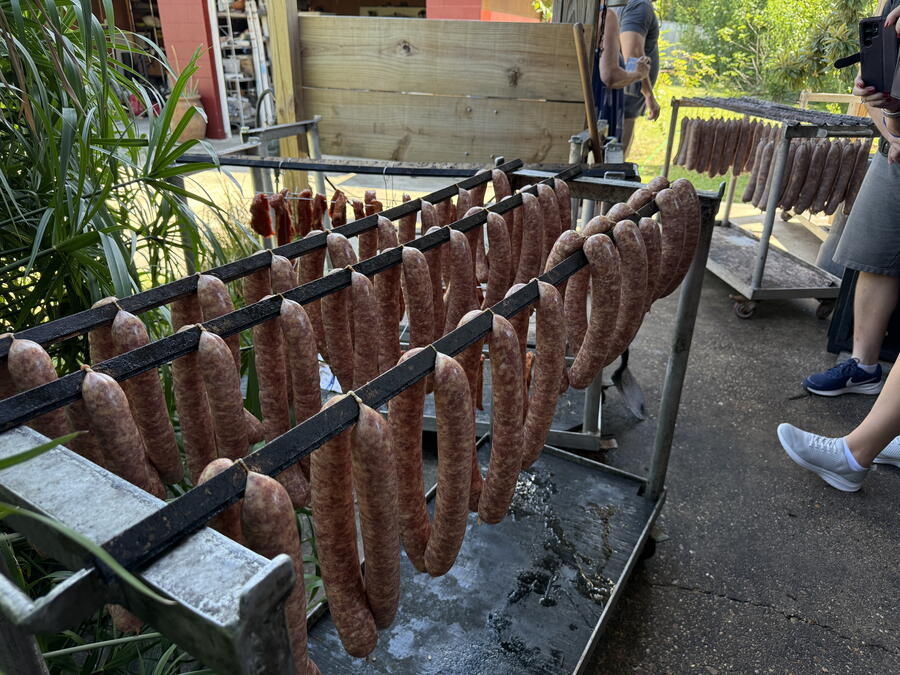
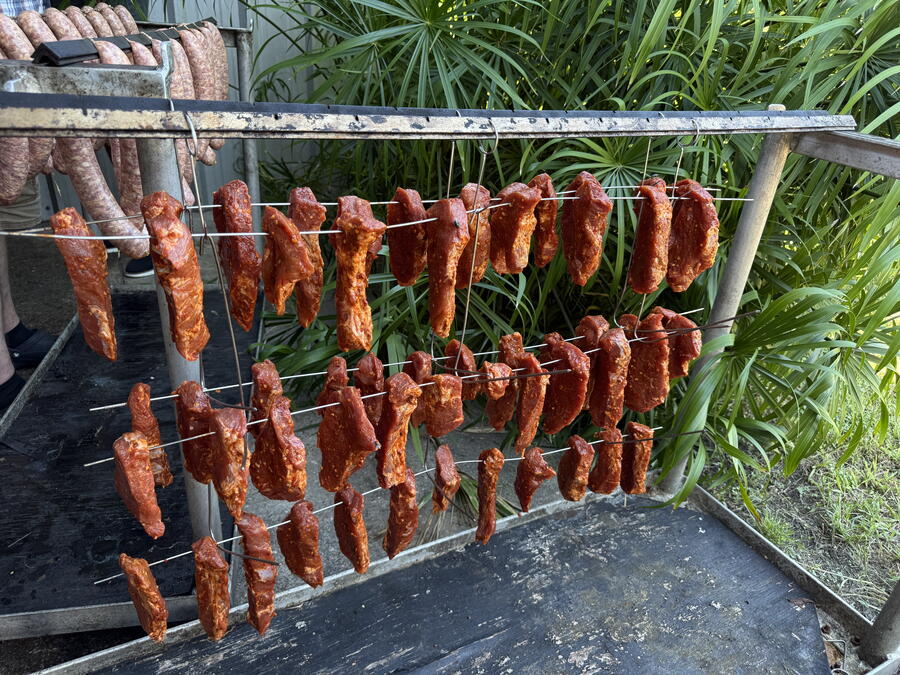


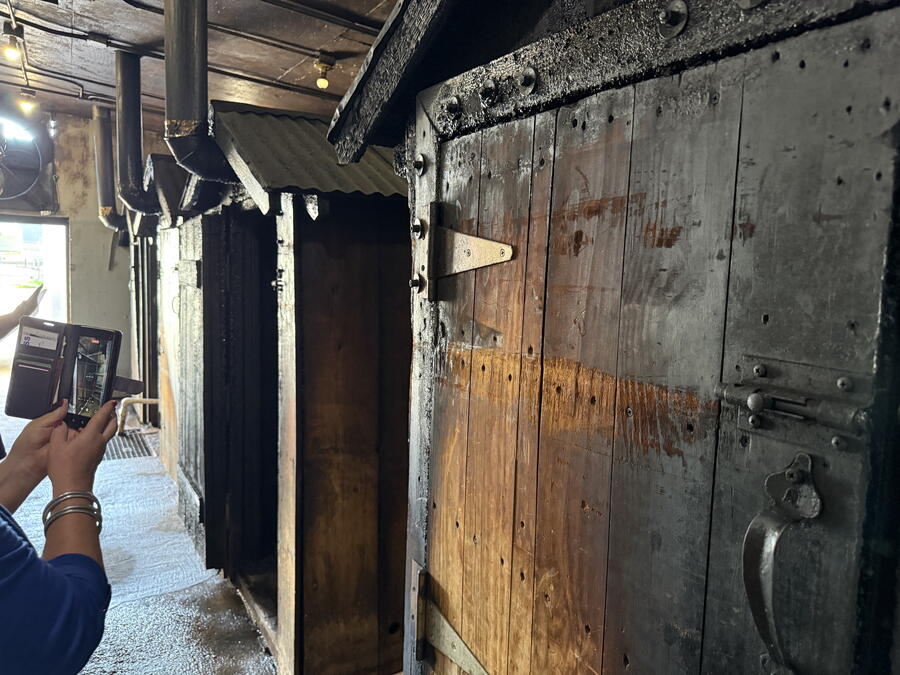
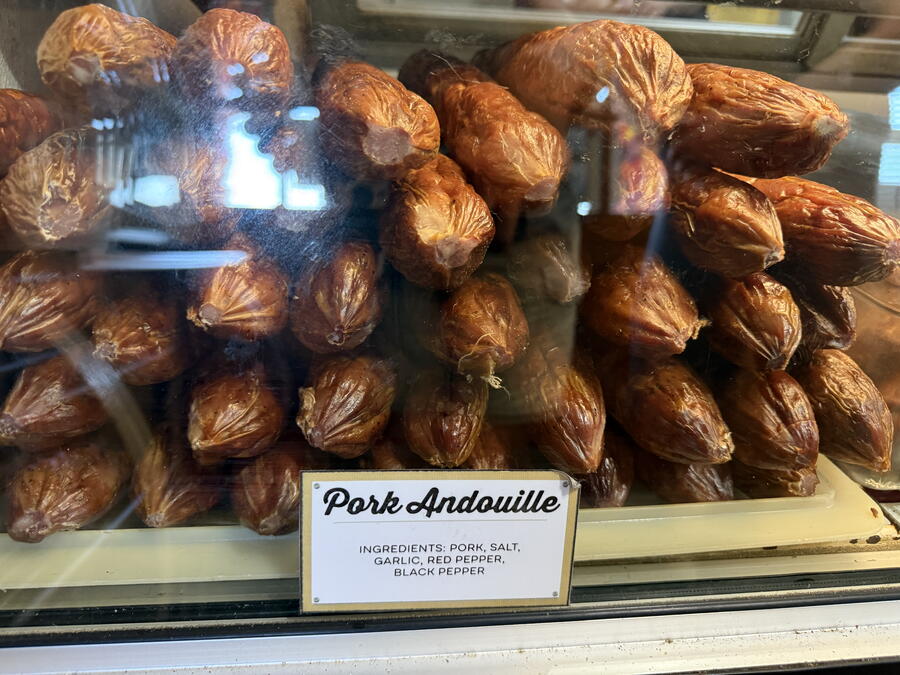
Wayne Jacob’s Smokehouse/Jacob’s World-Famous Andouille
Andouille sausage is made from pork, spiced with black pepper and cayenne, and smoked for at least a half day in sheds burning aromatic wood like pecan. French settlers developed the basic recipe, but German immigrants contributed to their smoking methods. In the River Parishes, so many establishments make this staple of local cooking, there is an official trail to enable people to try the real deal. With these places, one which is a restaurant/butchery and the other a just butchery, I finally appreciated the difference between the rubbery supermarket Andouille and superior ones made in Cajun country.
Wayne Jacob’s owner is Jarred Zeringue, and he oversees the production of the meats and the food served. I tried white beans, rice, and sausage as well as a bit of someone else’s fried catfish – all of it hearty, all of it delicious. In the second place, Holly Lions has taken over her family business and makes Andouille and other meats, which has now been run by four generations (and is incidentally not related to Wayne Jacob’s). Both owners showed off their smokehouses and the types of wood they use, which gives Andouille its amazing flavor.
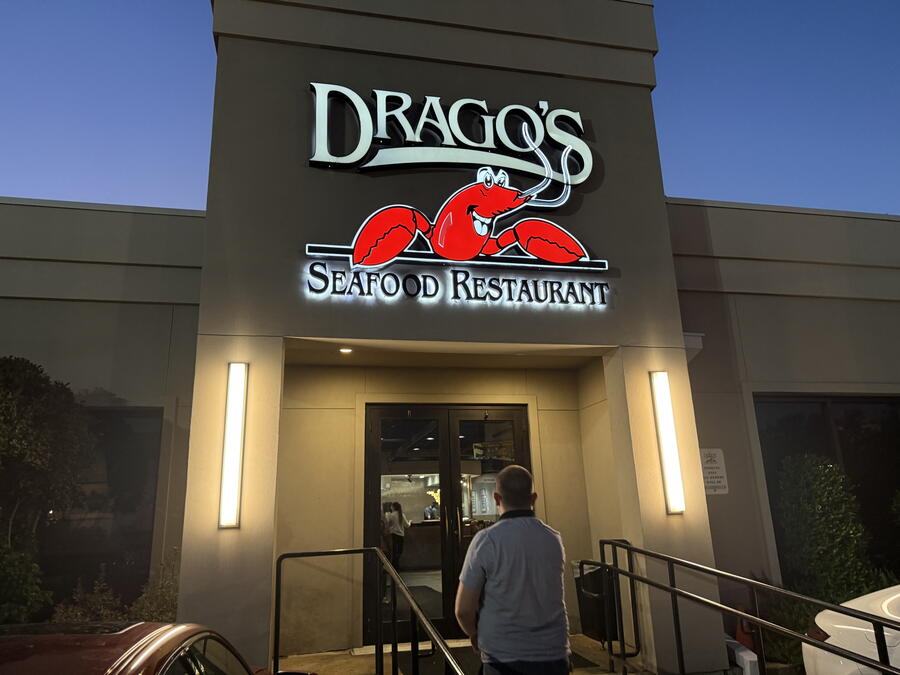
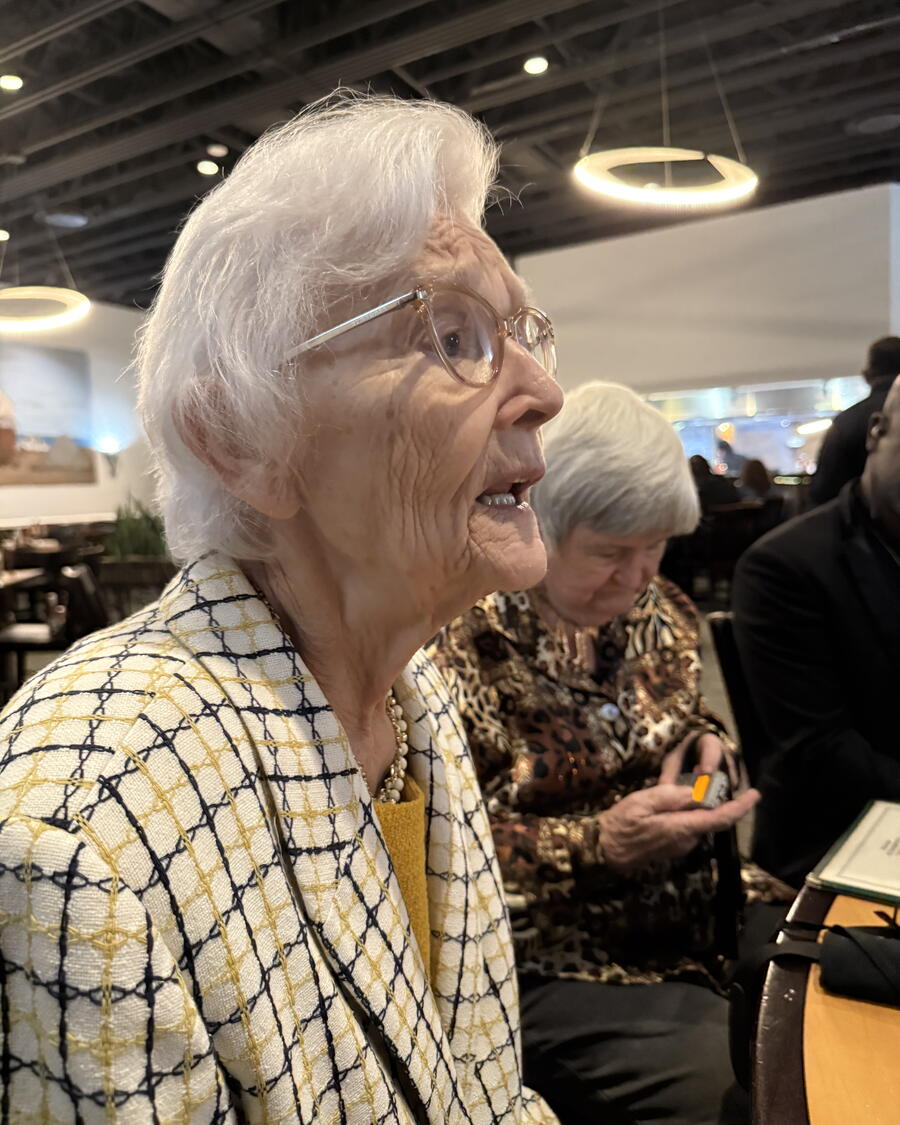
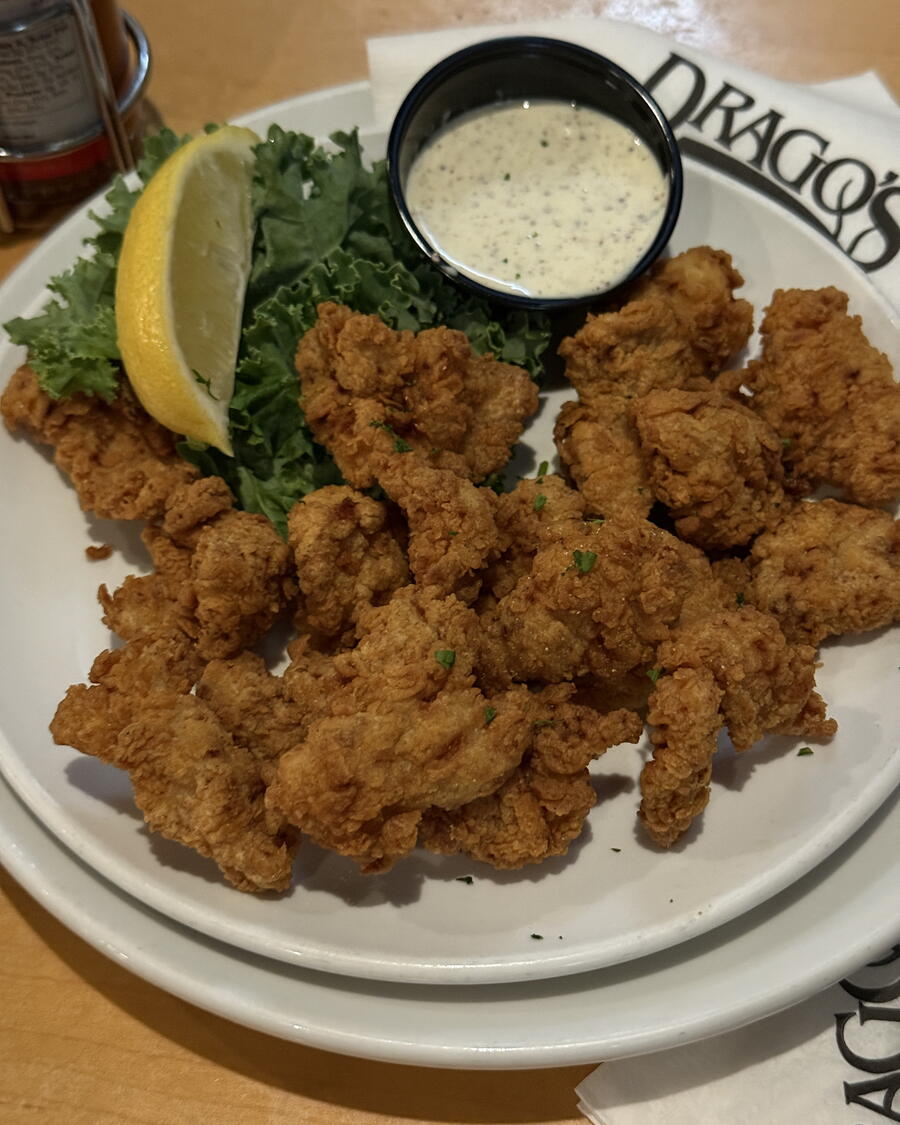

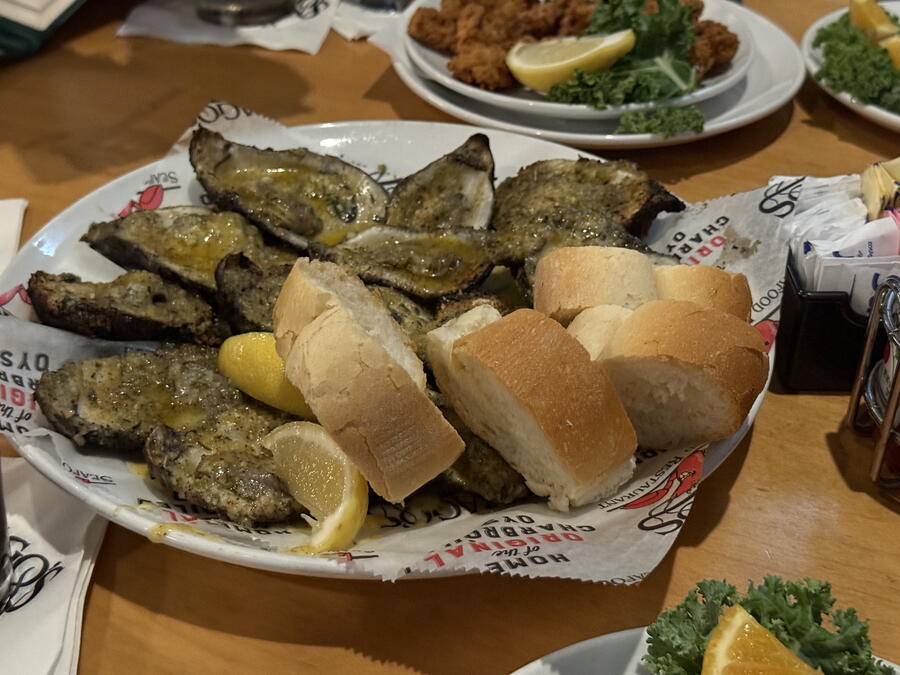
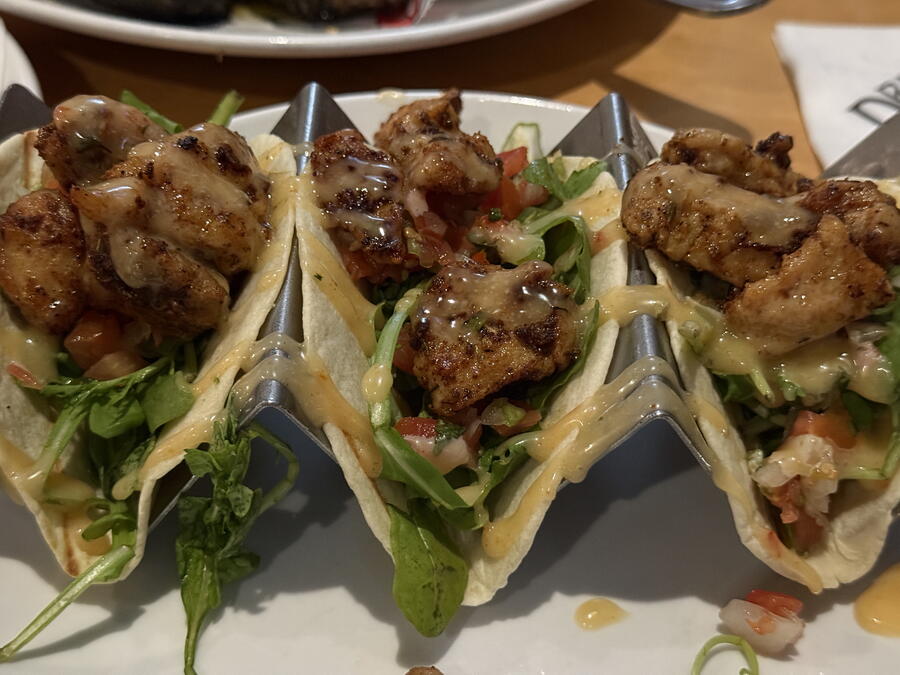
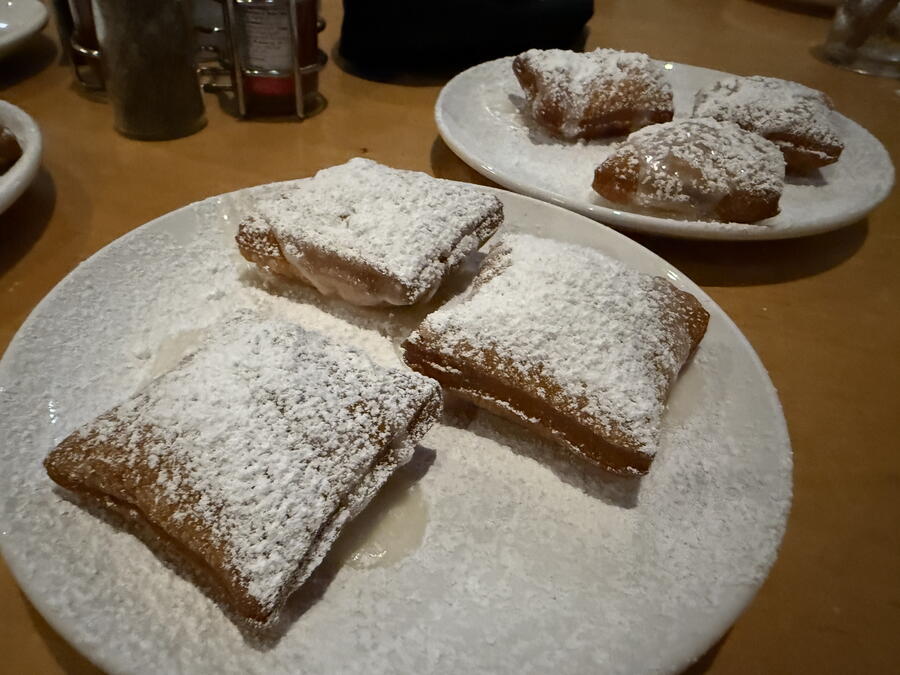
Drago’s
Croatian immigrant Drago Cvitanovich started this long-established local favorite in Metairie, a New Orleans suburb, in 1969. Today, his widow Klara and son Tommy keep the tradition going, with Klara greeting guests every day and Tommy managing. Drago’s has four other Louisiana locations and one in Jackson, Mississippi. Their most popular dish is arguably charbroiled oysters, which were smoky and briny. I normally don’t like this shellfish, especially when they’re raw, but I could have made a whole meal of these.
Since we were still full from the lunch at Wayne Jacob’s, we only ordered appetizers in addition to oysters. These included boudin balls (sausage and rice fritters), fried alligator bites, blackened gator tacos (probably the tastiest plate offered), and a crawfish sampler platter with etouffee, mac and cheese, and fried cake. I was surprised at the tenderness of the gator meat, which I probably wouldn’t have tried if it hadn’t been pre-ordered. We finished with beignets, which were the perfect dessert, even if we were even more stuffed by evening’s end.
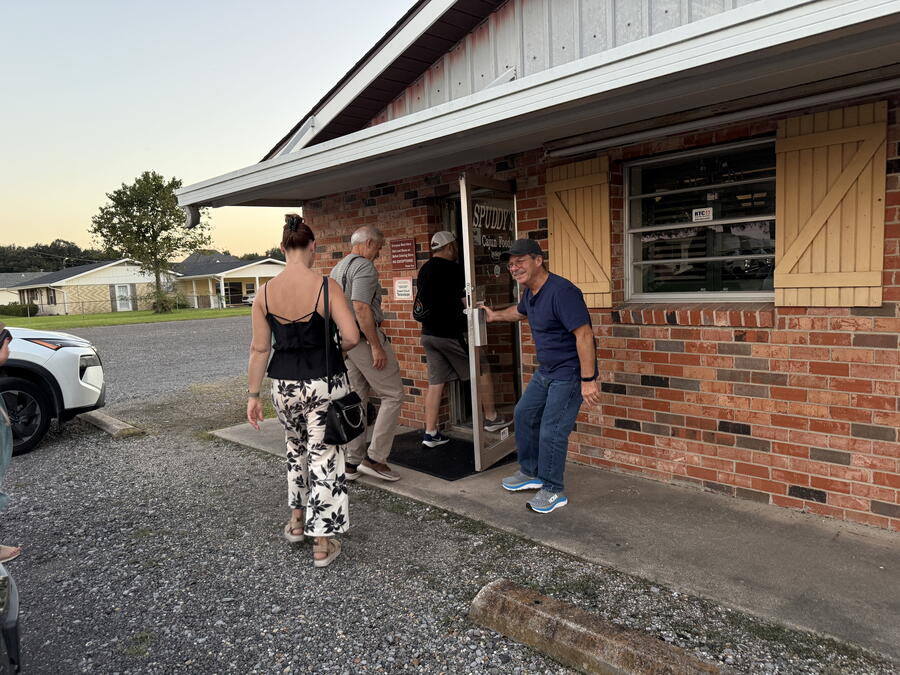
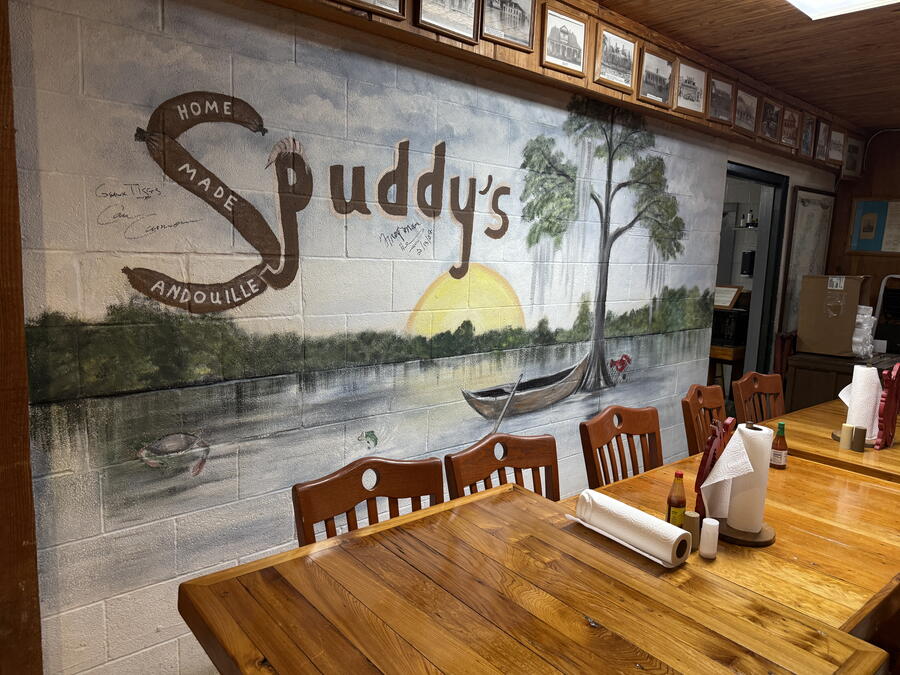
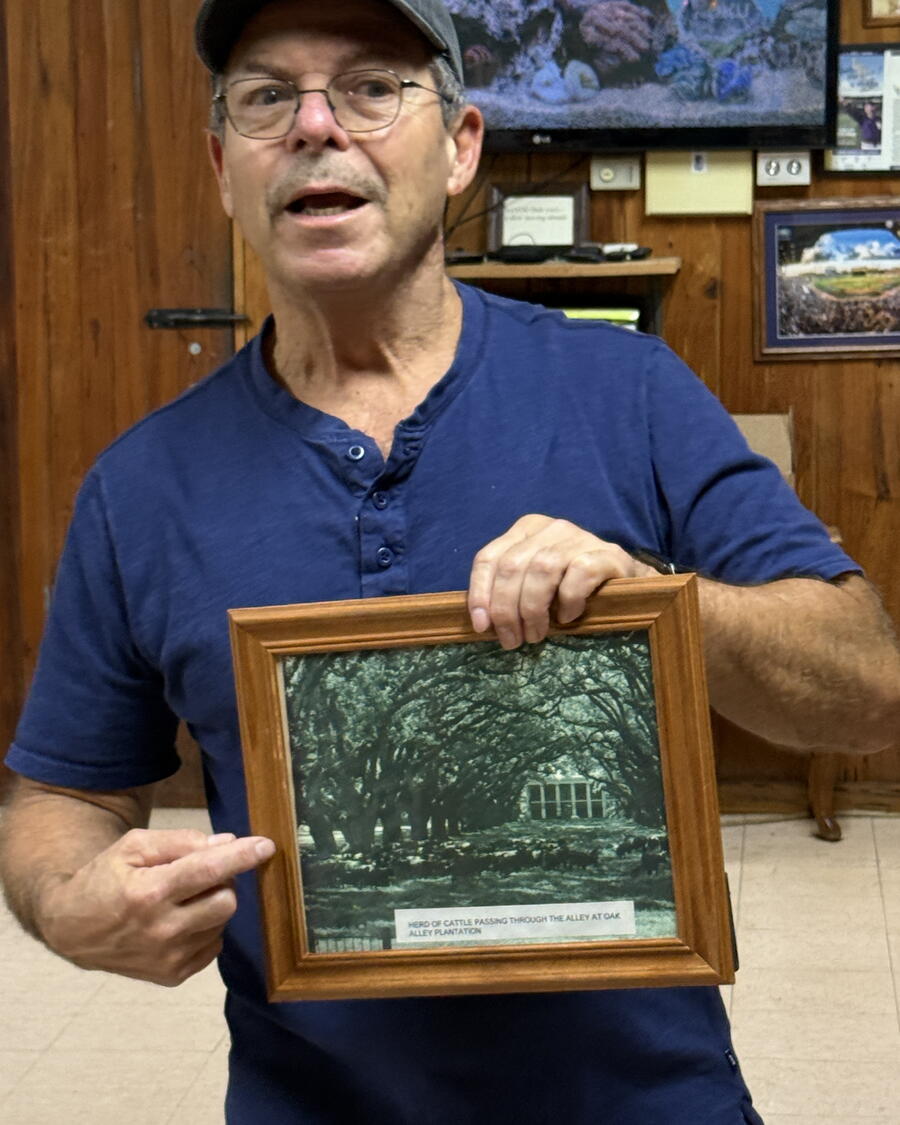
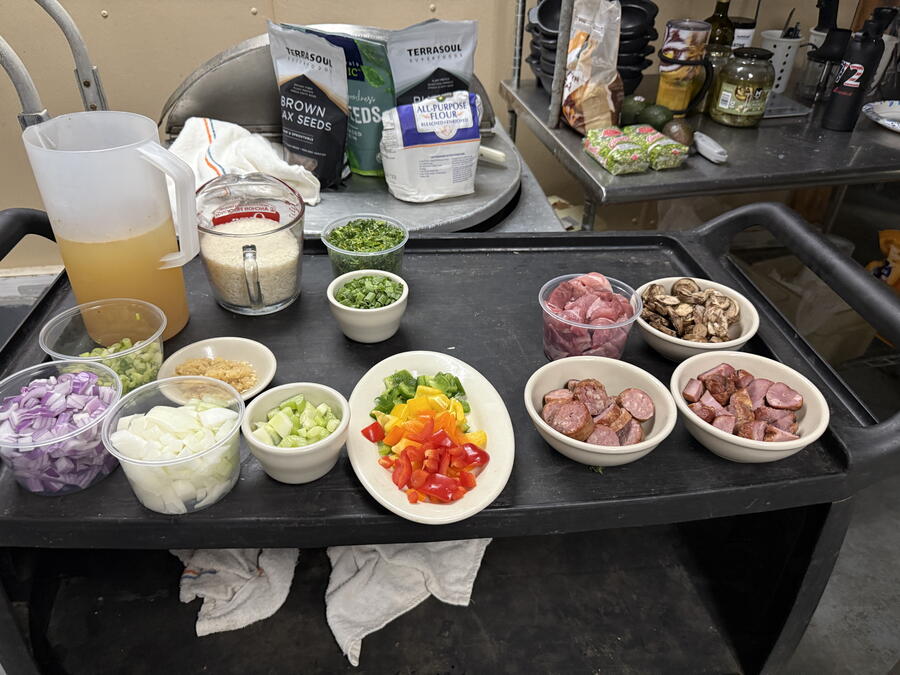
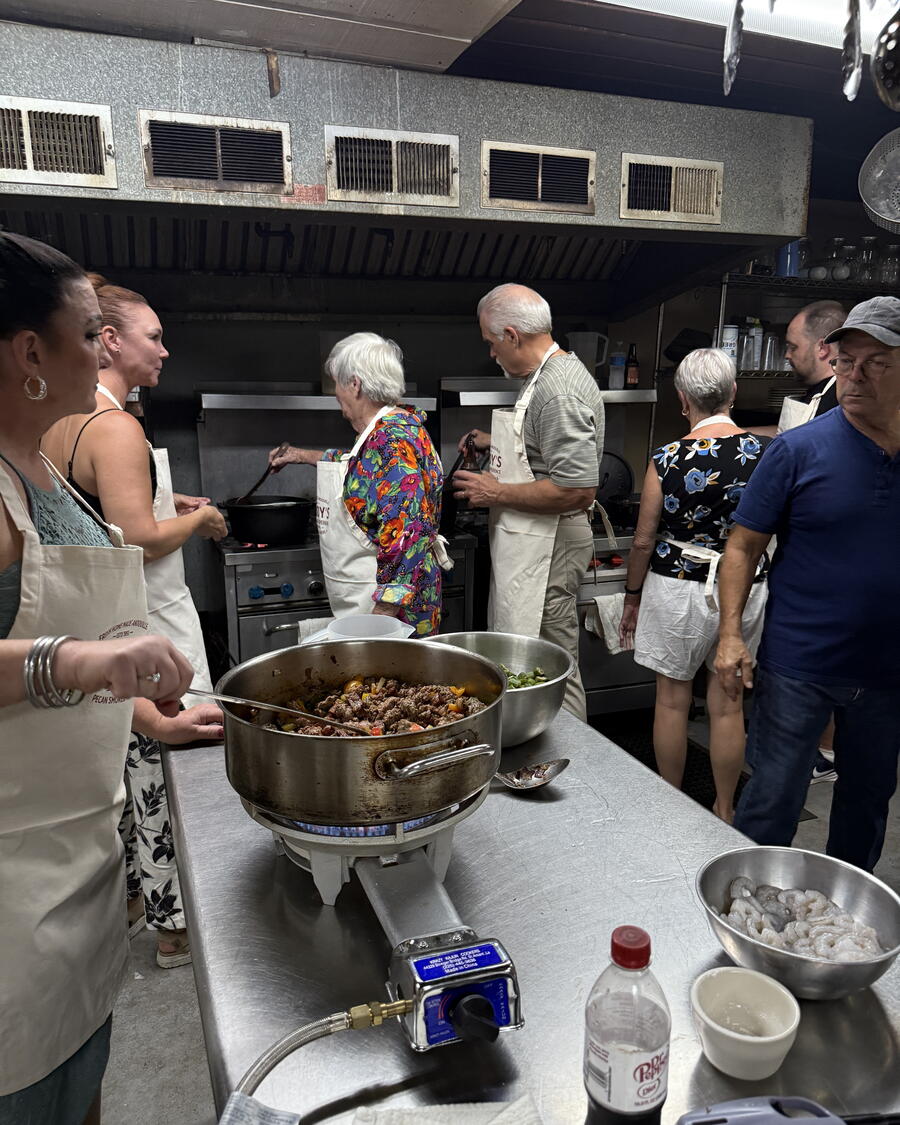


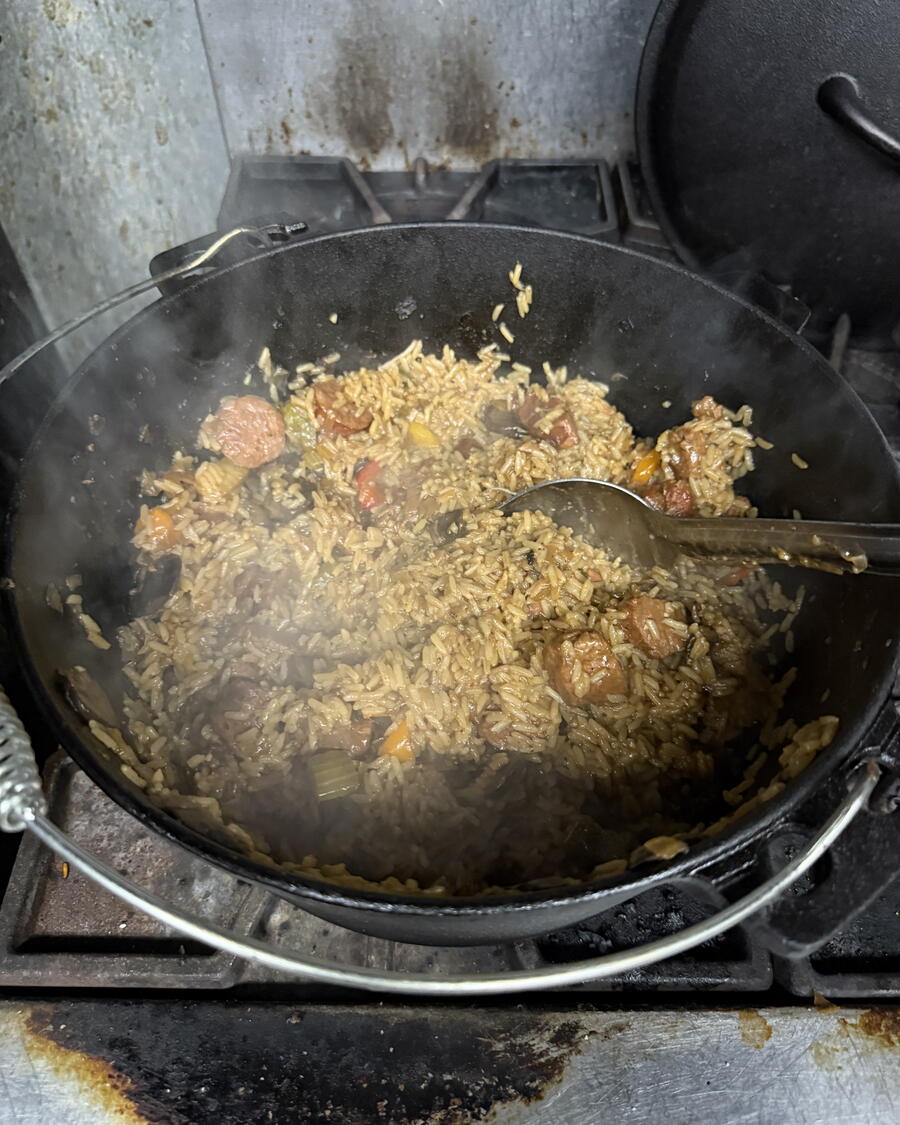

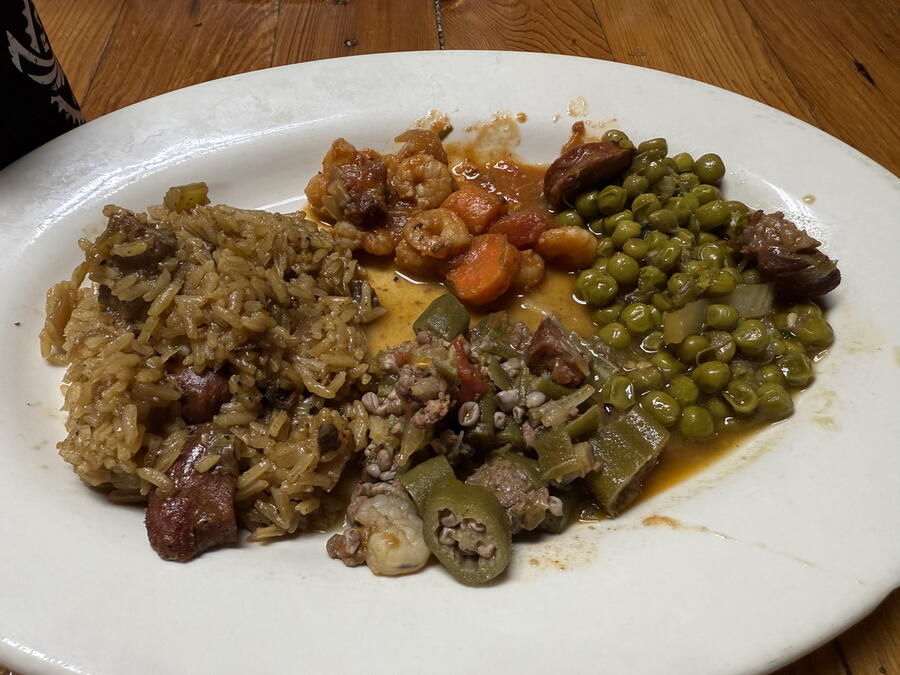
Spuddy’s Cajun Foods and Cajun Cooking Experience
The most enjoyable activity we did and the best food we ate was here in this unassuming establishment, which was so ordinary on the outside, we initially missed it driving by. But once we were inside, owner Spuddy Faucheux made it a party. His energy and enthusiasm for bringing Cajun food cooking to all made our group feel we could prepare anything. Prepping the ingredients for all the dishes we were going to make, he and his team then led us through cooking the most iconic dishes.
We made jambalaya, gumbo, shrimp creole, smothered okra, and petite pois (young peas). I handled the last dish, which is also known as roux peas, consisting of the trinity (onions, bell peppers, celery), broth, roux, bacon, and Andouille, which Spuddy makes on the premises. Whenever we achieved the way he liked it, he would do a little celebratory dance. So, not only was the meal excellent, but we also couldn’t help but feel happy with him.


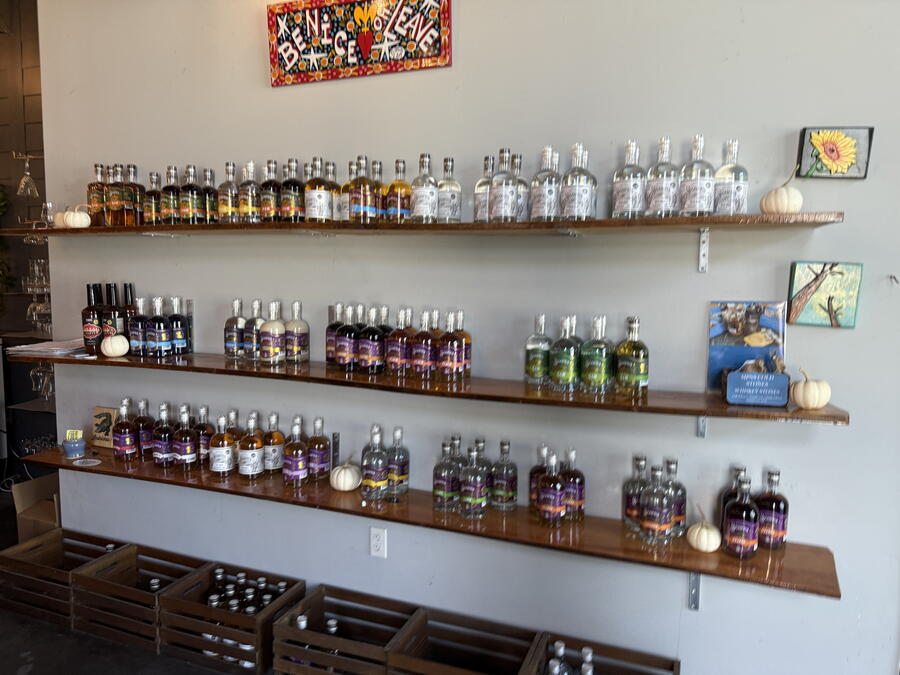
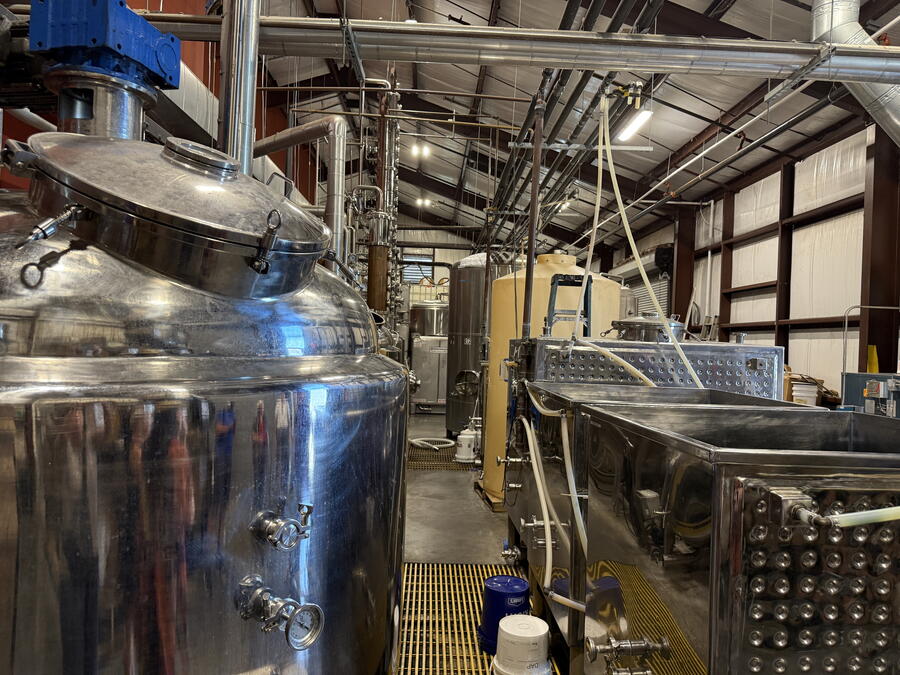

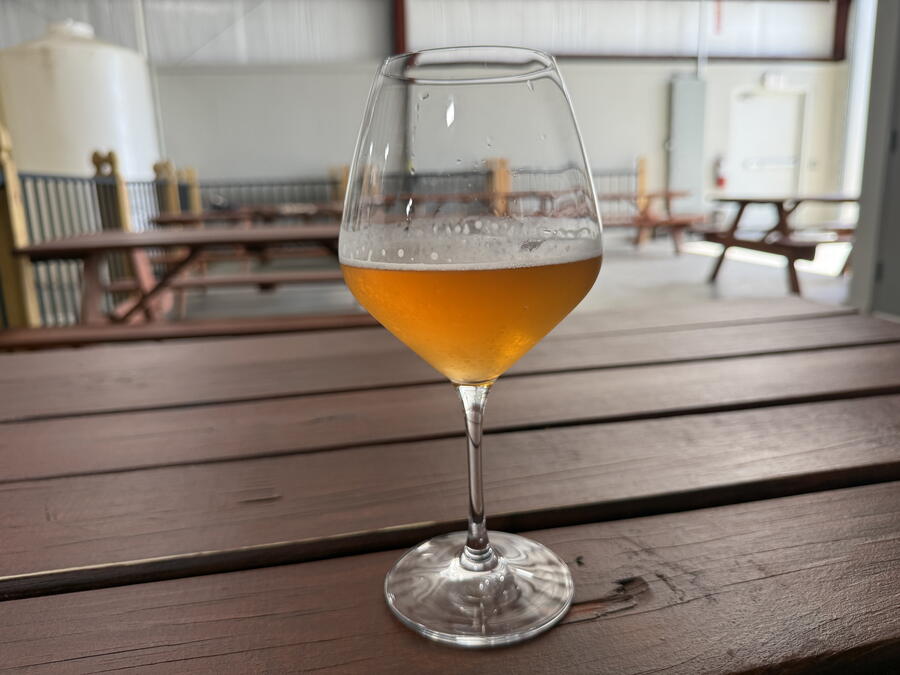


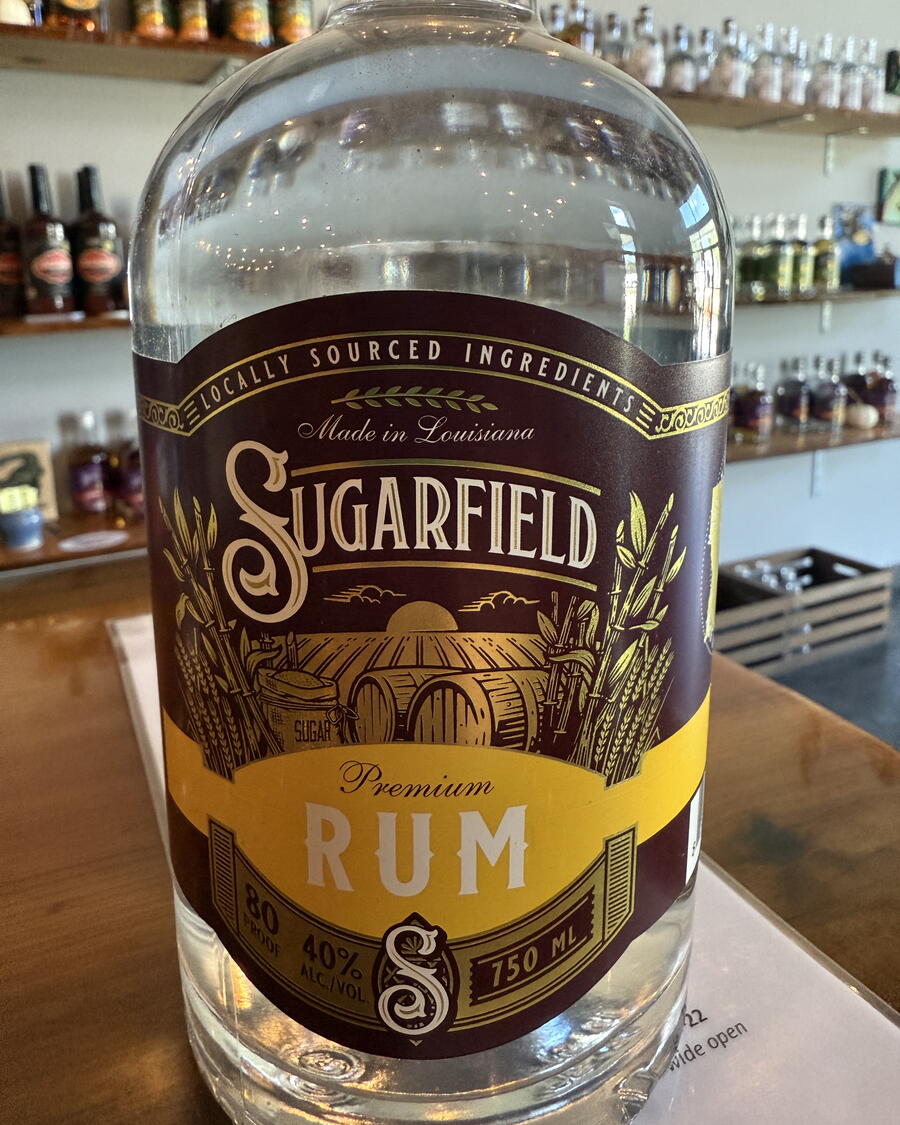
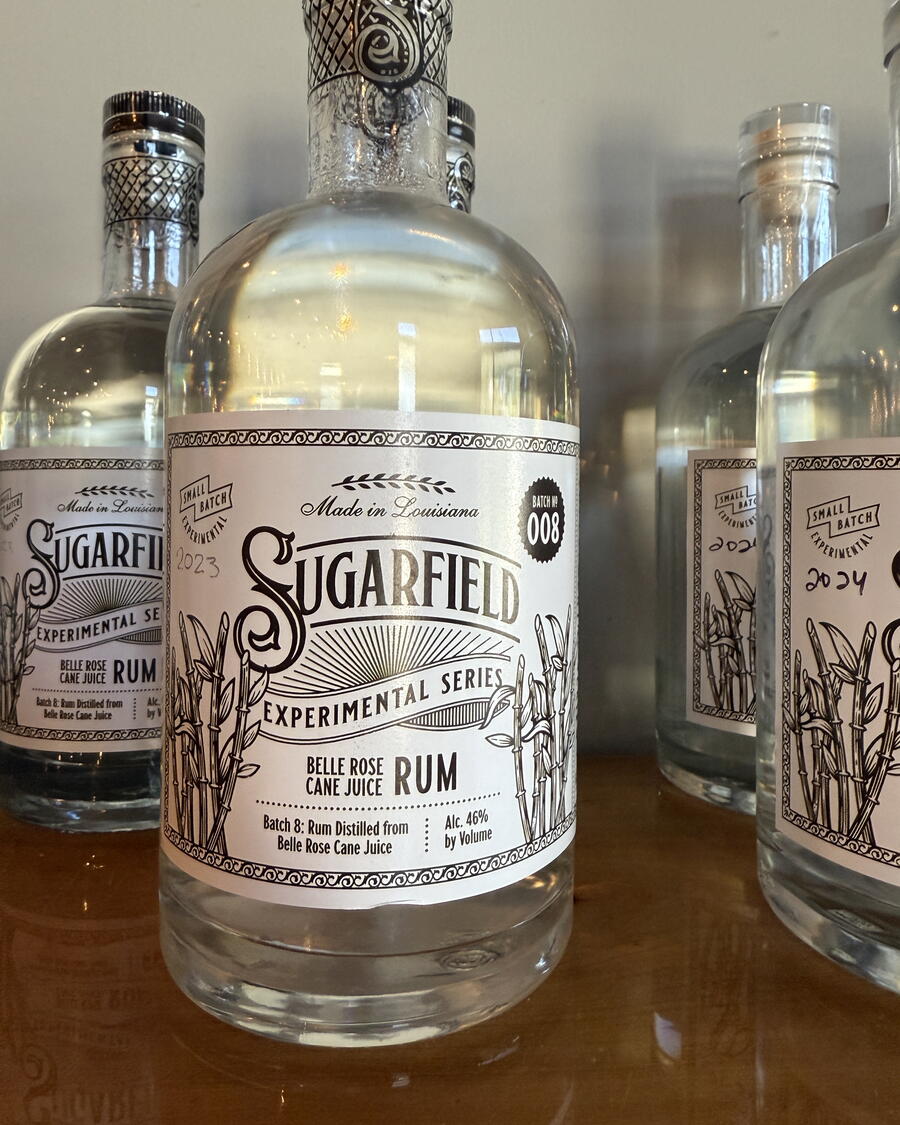
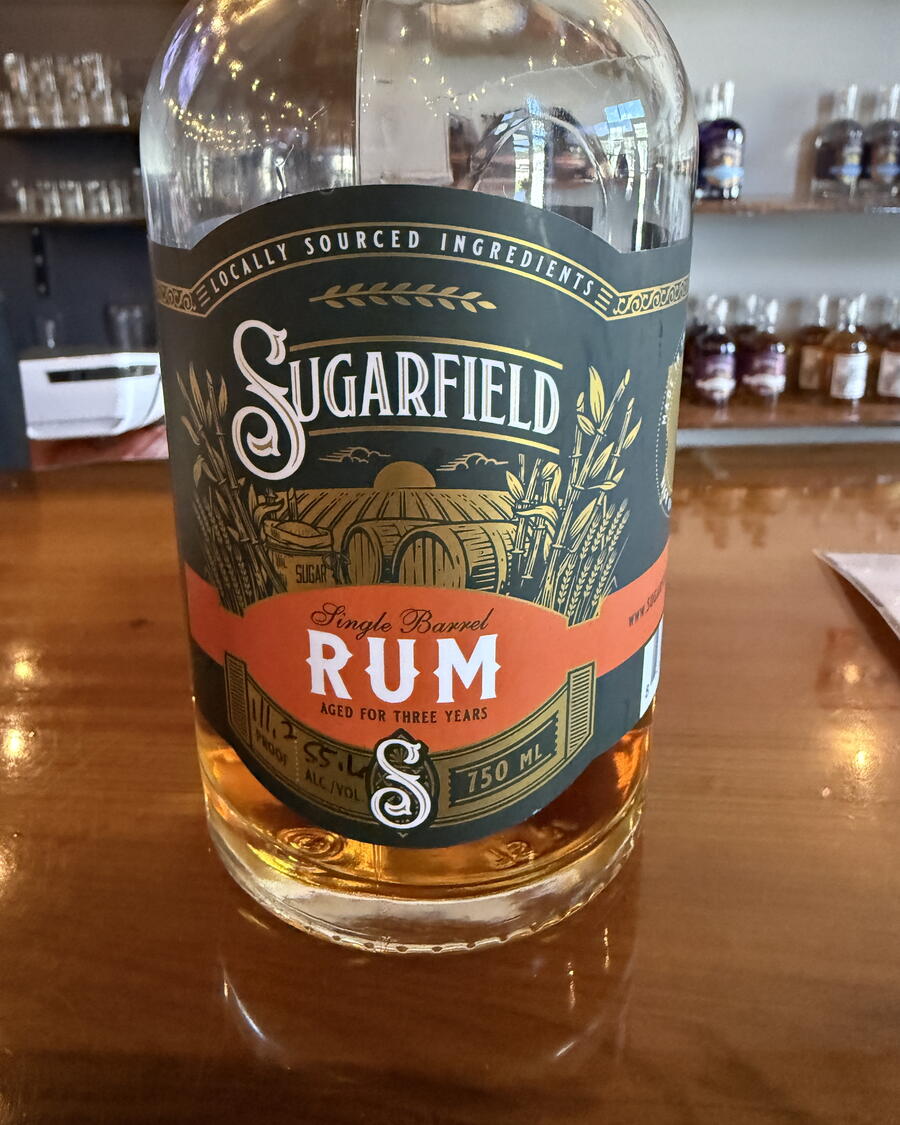
Sugarfield Spirits
Dr. Thomas Soltau is a neonatologist, but he is also passionate about distilling spirits, especially rum. He believes that the marketing of rum is problematic because most distillers don’t distinguish themselves by region. With Sugarfield, his goal is to change that perception, especially by using locally grown cane sugar and molasses. He and his team also make vodka, whiskey, gin, fruit liqueurs, and cider with apples from North Carolina.
We tasted four different kinds of rum, varying in types of sugar, distillin,g and aging. The ones with molasses and longer aging were more mellow and had greater complexity, like aged tequilas. The cider we sampled contained just a bit of carbonation and was refreshing, which helped on a warm day.
